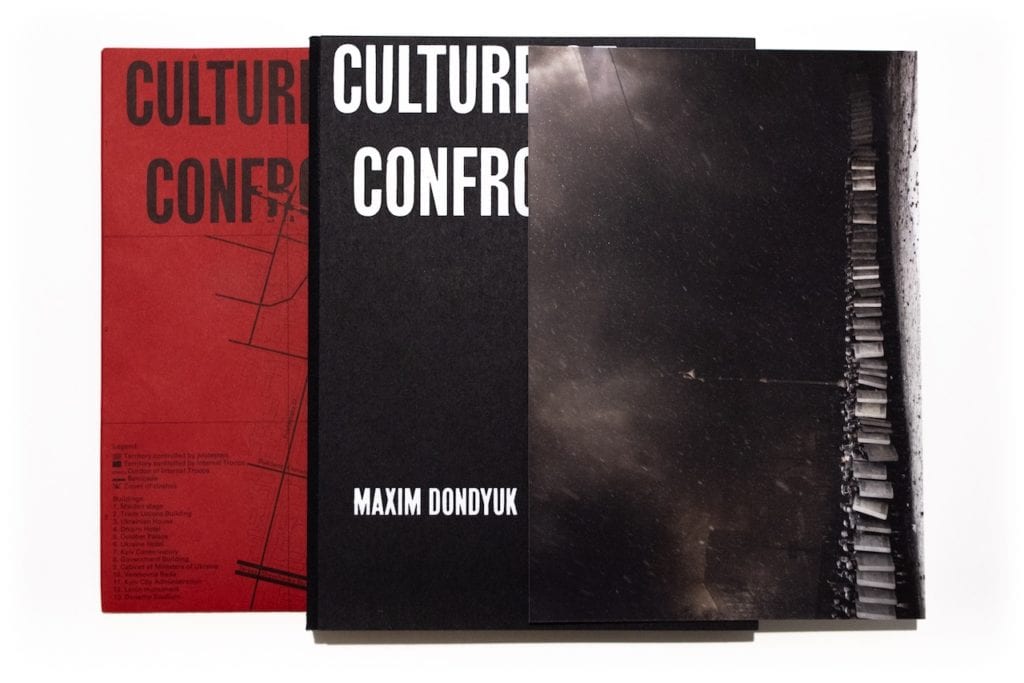Hundreds of people crowd in the city of Ukraine, wearing helmets and holding flags. A fire breaks out; a person wearing white gloves wipes the blood off the face of a young man. Police line up with their bulletproof shields: one stands on the bonnet of a van preparing to fire his rifle.
Maxim Dondyuk is a documentary photographer. His photobook, Culture of the Confrontation, showcases perspective-shifting images of Euromaidan – three months of protests that erupted against the government in Ukraine, characterised as an event of major political symbolism for the European Union.
“At the very beginning, this project was a real challenge for me,” says Dondyuk. “I was surrounded by hundreds of photographers, and I knew I needed to find a unique way to document the revolution.”
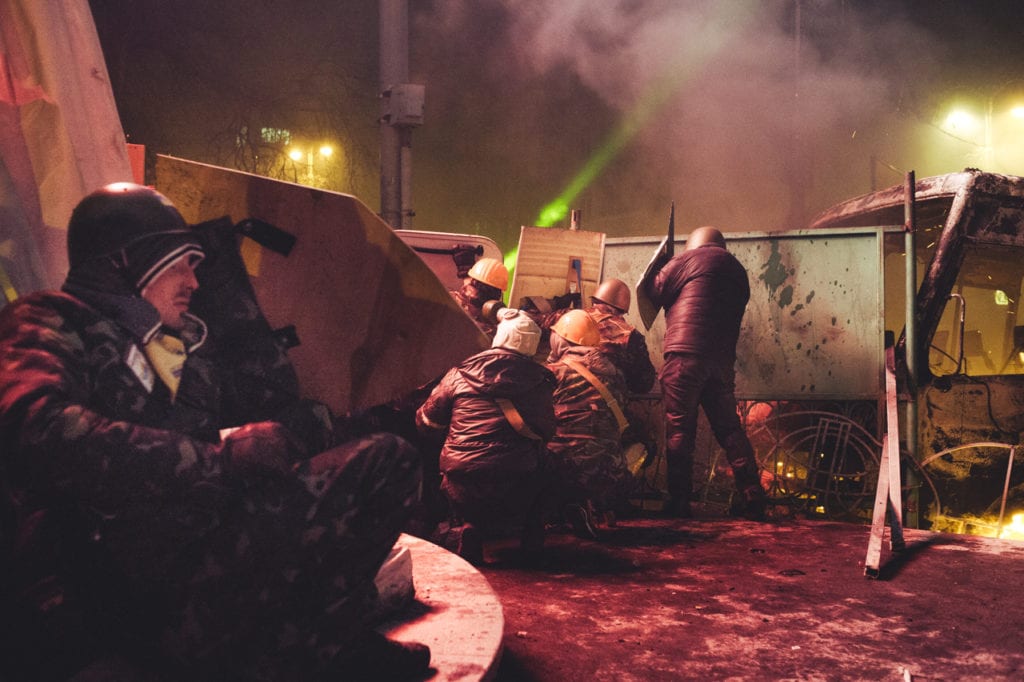
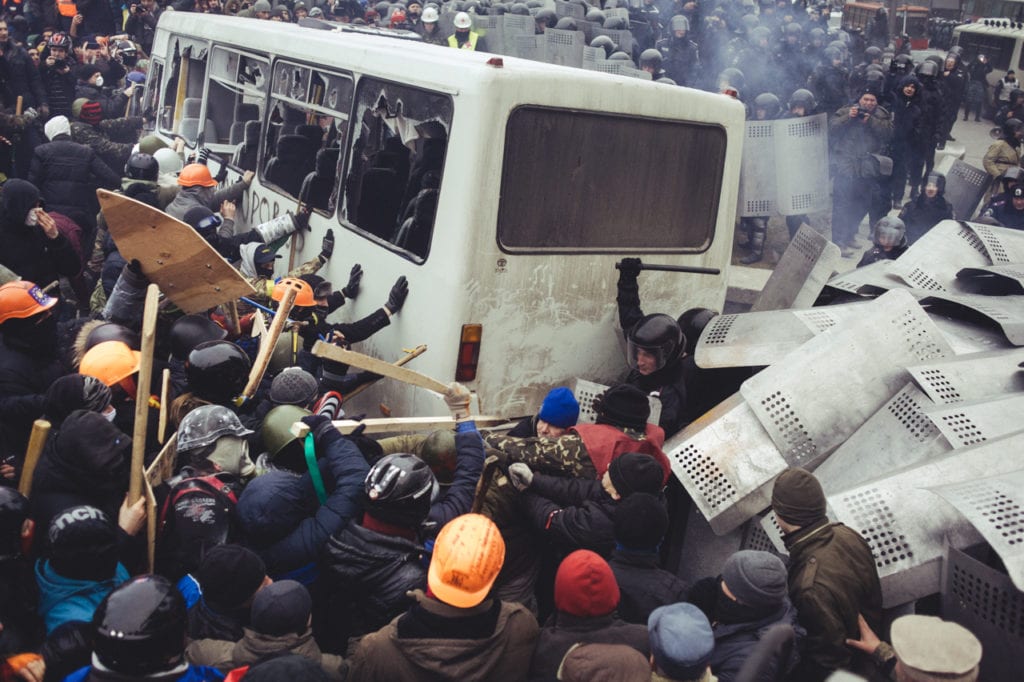
Inspired by battle paintings, the 35-year-old decided to disassociate himself from the historical themes within photojournalism, and focused instead on visual language, images, associations, and parallels. The resulting series captures abstract themes such as light and shadow, black and white, good and evil – though, interestingly, it is not possible to tell which side is which.
For Dondyuk, it was important to hear and see both sides. “I was totally on the protestors’ side, of course, but it was also necessary to understand what was going on from the other side of the barricades,” he says. “I didn’t try to show a good side and a bad side; I tried to show the confrontation of two different world views.”
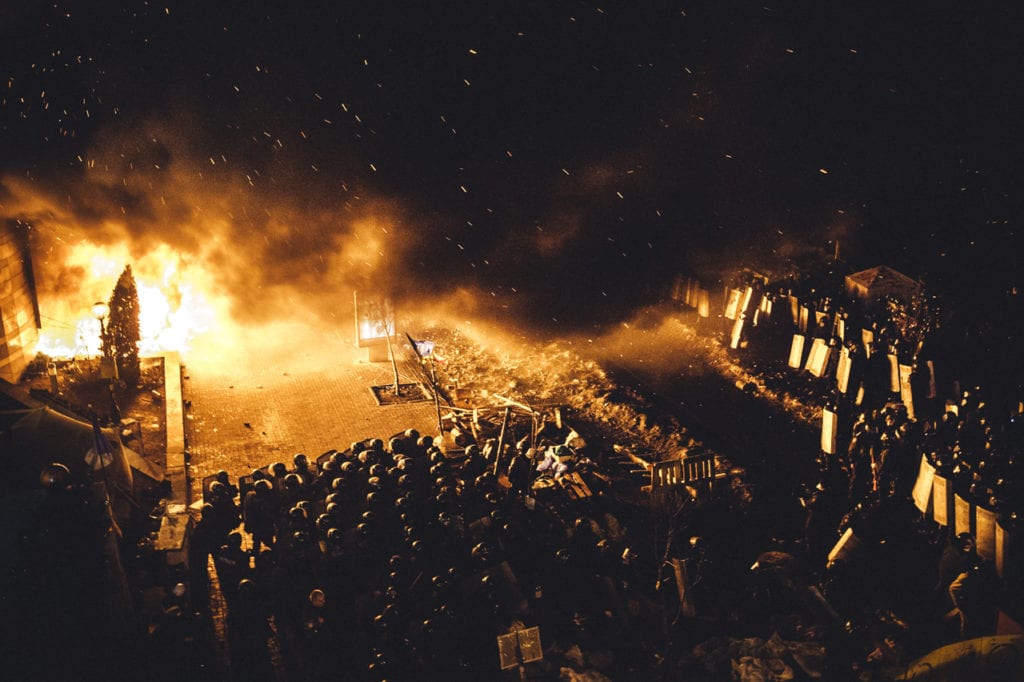
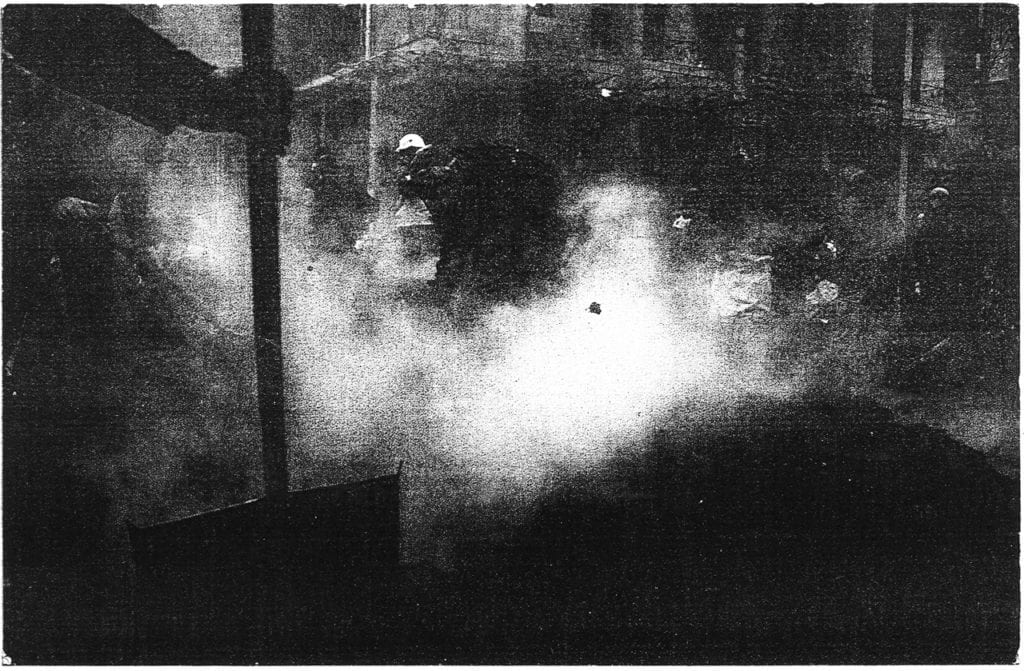
Capturing opposing parties, however, was not an easy task. Dondyuk witnessed riot police beating the press and confiscating their cameras, so he avoided telling people he was a journalist, unless it was a matter of access or safety. The Ukrainian native recalls that he was hit several times with rubber bullets during the revolution – once in the head and once in the leg with a grenade – which resulted in a fragmentation wound.
Despite his injuries, he went back with his camera the following day, with protestors helping him climb the barricades. “I had no idea how to stop documenting this event – I couldn’t,” he says. “The camera is my weapon and my mouthpiece.”
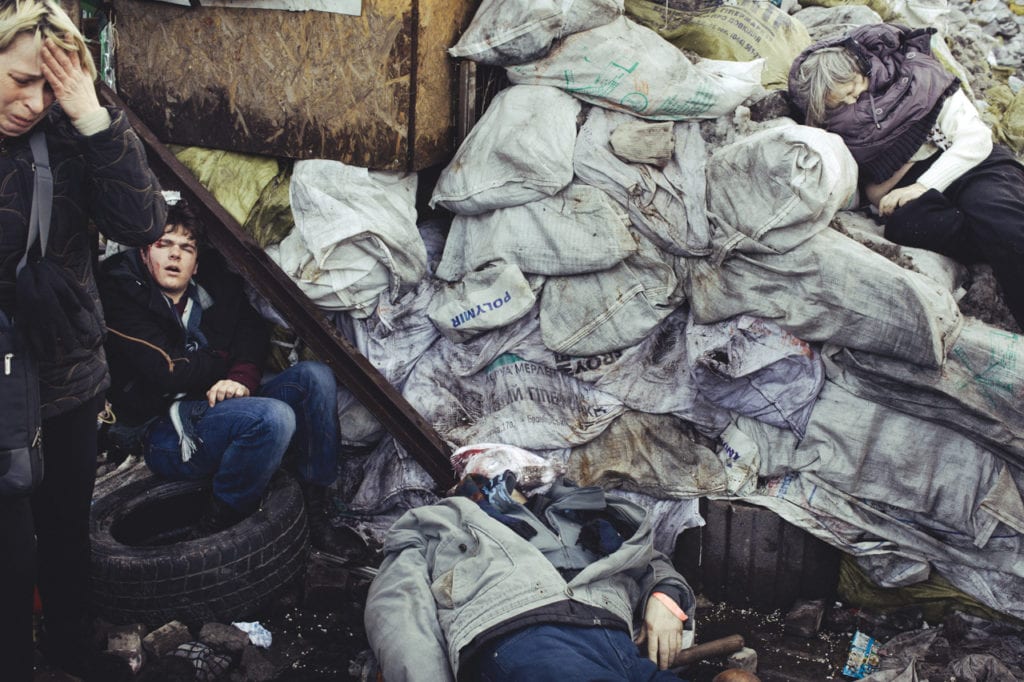
Despite this, since 2014 the photographer has tried to move away from being described as a photojournalist, to gain more freedom and to be able to concentrate on exhibitions and photobooks. “I am now an absolute opponent of any propaganda or romanticisation of war or revolution, both in the media and in art,” he says. “There is nothing worse than war – both sides always lose. I saw her face and felt her suffering.”
Culture of the Confrontation by Maxim Dondyuk is self-published.
